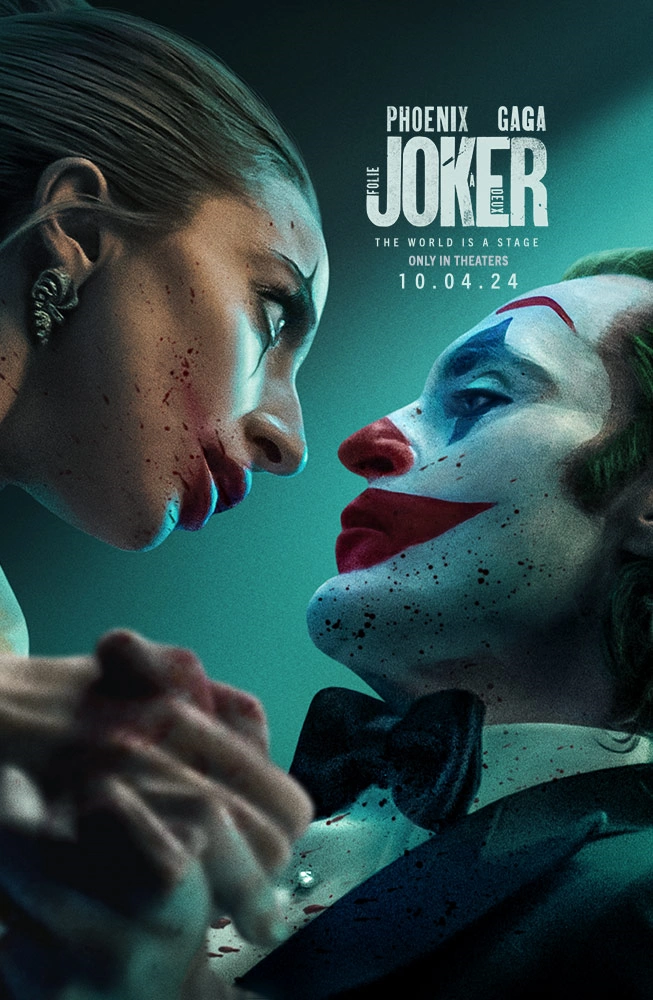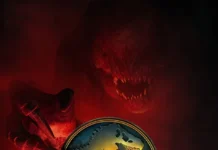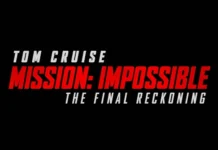OFFICIAL SYNOPSIS: JOKER: FOLIE À DEAUX finds Arthur Fleck institutionalized at Arkham awaiting trial for his crimes as Joker. While struggling with his dual identity, Arthur not only stumbles upon true love, but also finds the music that’s always been inside him.
 As in its predecessor The Joker, Joker: Folie a Deux is an artfully filmed, profoundly disturbing portrait of madness. The line between fantasy and reality is thinner than ever. Music is largely used to define this boundary although not completely. Through this technique, director Todd Phillips brings a mesmerizing, but sometimes confusing, tale to the screen. This film is not for the faint-hearted.
As in its predecessor The Joker, Joker: Folie a Deux is an artfully filmed, profoundly disturbing portrait of madness. The line between fantasy and reality is thinner than ever. Music is largely used to define this boundary although not completely. Through this technique, director Todd Phillips brings a mesmerizing, but sometimes confusing, tale to the screen. This film is not for the faint-hearted.
Joaquin Phoenix again gives a tour-de-force performance as Arthur Fleck, the hapless, failed comic who turns into a psychotic murderer. As the film opens, he is institutionalized at Arkham Asylum awaiting trial for the murders he committed in the previous film. His gaunt, skeletal appearance reflects his hopelessness and confusion within the brutal filth of the place. But his shifts into his Joker alter-ego, triggered by what he perceives as his audience, take him to a happier place even though it’s a fantasy.
In reality, he has acquired a cadre of admirers as some infamous murderers have, both inside and outside the prison. He’s alternately the butt of cruel jokes by guards and admired by his fellow inmates. Outside, a motley mob of “fans” demonstrate for his release. He feeds on this to lapse into his fantasy musical numbers often done in the smoky bar, saloon singer style. They mostly reflect his mental state at the moment, but not always. This makes the narrative a bit confusing, but then again, the film is about madness.
The term “folie a deux” means madness of two, so there is another — Lee Quinzel, portrayed by Lady Gaga. Lee and Arthur meet when a sympathetic guard played by Brendan Gleeson, gets Arthur a pass to attend a music therapy session. It’s love at first sight for Arthur. Lee’s motivations are a bit more obscure, but she convinces him that they have a future once they escape from the hellish prison. Will that happen in reality or only in fantasy? I’ll leave that to you to experience.
Gleeson’s character Sullivan is a perfect reflection of the institution’s crazy-making effect on inmates who are already crazy. He cruelly demands jokes from Arthur to receive privileges. If Arthur performs, Sullivan seems truly impressed and softens his attitude. But he can change in a nanosecond to a sadist who savagely beats and abuses him and the other inmates, along with the other guards.
Visually, the cinematography is compelling. The exterior shots of the Arkham Asylum were filmed at the abandoned Essex County Isolation Hospital in Belleville, New Jersey. Its ghostly appearance enhances the reality/fantasy motif quite well. Other exteriors were filmed in both Los Angeles and New York standing in for Gotham.
All of the performances in the film are outstanding. My only gripe is that when Lady Gaga sings, at least to me, Lee disappears and it’s all Lady Gaga. She can’t help that her musical performances are so powerful. By the way, she and Phoenix performed their numbers live because Phillips wanted a rougher, more “normal” feel. I can’t say that really worked.
Joker: Folie a Deux contains alarmingly intense violence and brutality. If you are disturbed by this, you might want to skip this one. I found it necessary to the story and only one scene seemed over the top. I can’t describe that scene without spoilers, so be warned. This film is definitely not for everyone. That said, it’s a masterful piece of filmmaking. It’s not as strong as JOKER, but it has a different purpose, and that’s hard to convey. In the end, it seems that the audience is asked to make a determination: Is it the character or his madness we value? – JoAnne Hyde












